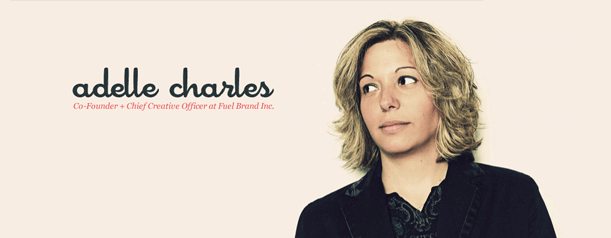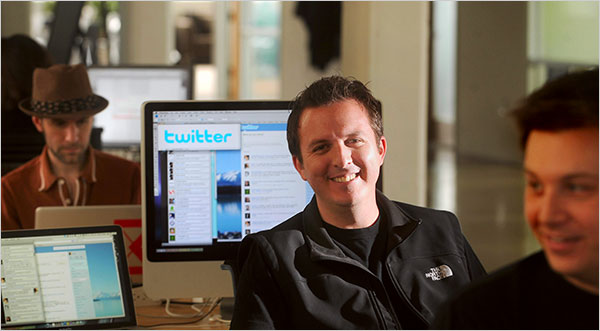
Quantifying influence is difficult. Quantifying the influence of a single person on the internet is nearly impossible. There are so many talented web developers and designers in the industry right now, and so many niches to be filled that there is room for them all to have great influence. All those included in this list have had great influence, often in radically different ways. The list includes some of the foremost authorities on designing for web standards, including two that literally wrote the book on the subject, designers, web branding developers, founders of web development and design education platforms and more. Listed here are 20 of the most influential web developers in the world.
#20. Adii Pienaar

Founder of many startups and prominent blogger, Adii Pienaar, AKA “Adii Rockstar,” lives up to the hype. Adii blogs on everything from web design to entrepreneurship and business philosophy. From UX design to premium pricing philosophies, Adii covers many bases that those with a lesser understanding of the internet are hard pressed to match. His company WooThemes has had an enormous impact on the face of the internet as it creates beautiful themes for the huge and growing larger WordPress platform.
#19. Adelle Charles

Creative Director for the Fuel Brand Group, Adelle Charles is one of the major heavyweights in online branding and design. In addition to her work with the Fuel Brand Group, Charles is also a designer with Bitly, uploads her designs to Dribbble, and has a passion for small startups. Charles also founded Carbon Ads, an invite only targeted advertising company that seeks to advertise relevant services to qualified audiences.
#18. Jacob Cass

Not just confined to web design, Cass also works in logo design, print design, and pretty much any type of design. His impact on the web design world has been big, influencing the market with his unique and meaningful designs. We can expect to see a lot more from this young designer as he is just in his mid-twenties and has a long, and likely revolutionary career in front of him.
#17. Veerle Pieters

Freelance web designer since 1992, Pieters founded duoh.com which serves as her blog and portfolio in 2000. So much more than just a blog and portfolio, the website focuses on design principles, online branding, quality UX design and pretty much everything else web design oriented.
#16. Chris Coyier

This web developer is always striving to be on the cutting edge of development, and the CodePen project for which he is a designer is just that. This new method of developing and teaching development in a browser stands to take off and revolutionize the way websites are built across the web. He also writes for the website CSS-Tricks, and is one of the podcasters of Shop Talk. Coyier’s efforts tend to be on a macro scale, trying to bring web design know how to the masses, and it’s working.
#15. Patrick McNeil

McNeil is a well known designer in the industry. An author, writer, developer, speaker, and lover of all things design, McNeil’s work has served to push the industry forward. His blog is intended to present relevant information for both experienced developers and new developers, and his website Design Meltdown is a great place to view his portfolio and see him implementing the principles he talks about on his blog and in his book series, The Web Designer’s Ideas Book.
#14. Ethan Marcotte

Marcotte is one of the developers really pushing forward the principle of responsive web design, so much so that he wrote the book on the matter, called fittingly Responsive Web Design. He also co-wrote two books, Handcrafted CSS, and Designing with Web Standards, 3rd edition. Marcotte has done development and design work for the Sundance Film Festival, the Today Show, and New York Magazine. His professional passion is elegant, meaningful, thoughtful design.
#13. Aarron Walter

This author and web designer has written major books in the web design industry such as Building Findable Websites: Web Standards, SEO, and Beyond, and Designing for Emotion. Walter is an oft featured speaker at major web design conferences, and user experience conferences, and is one of the major players in the design industry.
#12. Brian Hoff

One of the foremost designers in the industry. Hoff’s work is evident in both the websites he has built for others, and those he has built for himself and the greater web development community. His site Dribbble is a place where web creators from all corners of the industry gather to collectively answer the question “what are you working on today?” and he is also the founder and director of Brian Hoff Design, a company that designs applications and tools for web developers to use on their sites.
#11. John O. Nolan

This web developer describes himself as professionally homeless and many see his lifestyle as living the dream. He moves from exotic location to exotic location, working remotely as a web design freelancer and working on a blog platform startup called Ghost that he believes will change the face of blogging on the internet.
#10. Fabio Sasso

Sasso is a web designer that has worked his way into the elite in the industry. He is currently employed by Google, but that does not keep him from running one of the foremost design blogs in the history of the internet. His tutorials on his project Abduzeedo are some of the most sought after design tutorials in the industry. His design experience includes working for major companies including Wired UK, MSNBC, and Digital Arts Magazine. During his two years at Google he has worked on many major projects including Google Wallet, Offers, Shopping, and Ventures.
#9. Jakob Nielsen

Nicknamed “the king of usability,” Jakob Nielsen is one of the pioneers of UX design. His research and consulting firm, The Nielsen Norman Group, conducts evidence based user experience research, training and consulting. In an industry that has been defined by the principle of trial and error, Nielsen seeks to provide developers with sure fire ways to increase the usability of their website. The NNG has been at the helm of UX development since 1998 and has had a massive impact on the evolution of one of the most important aspects of web design.
#8. Jacob Gube

Gube runs a website called Six Revisions. While some of his content is technical in nature, much of the content on the site is strategic. He seeks to help developers work through some of the major obstacles involved with freelance web design and development. Article topics include identifying bad potential clients, how to solicit and benefit from feedback, and other articles on web design and client management strategies. This is one of the most popular blogs on web design and its influence is great as it is changing the way freelancers work in the industry.
#7. David Leggett

This developer has been making websites since the age of ten and has since created one of the most in depth web design tutorial websites on the internet. UX Booth is one of his websites, which is one of the top User Experience design communities around. He also has a personal blog, theleggett.com, on which he keeps his followers updated on his personal and professional life in the web design business.
#6. Nick La

This developer has his fingers in many pies. He is a web developer himself and his website, ndesign-studio.com, showcases his skills and acts as a portfolio. His Best Web Gallery website is a collection of what he deems to be examples of the top tier web design as it exists on the web today. Web Designer Wall is a website that hosts tutorials that he and other developers and designers have put together, and Icon Doc showcases the art and benefit of stock icons and provides users with advice and strategies for implementing stock icons in their designs.
#5. Matt Mickiewicz

The founder of SitePoint, Mike Mickiewicz is another developer finding success in helping other developers establish themselves in the industry. Sitepoint helps developers work through both the technical issues of web design, and the professional issues faced especially by freelance developers. SitePoint also delves into ethical questions about web design, and strives to improve the industry as a whole by facilitating discourse centered on fundamental questions such as “should users be allowed to disable javascript on your website?”
#4. Vitaly Friedman

One of the founders of Smashing Magazine, Vitaly Friedman has had a hand in building one of the most read, most talked about blogs on the entire internet, and it’s a web design blog. In addition to the blog, Smashing publishes books to give their readers in depth information on the most cutting edge technologies. The blog covers everything from coding in Javascript, to elite UX design, e-commerce, and even popular do it yourself platforms like WordPress. This website truly has something for everybody in the web design field.
#3. Collis Ta’eed

This developer is the founder and CEO of Envato, a web development ecosystem designed to provide tutorials, resources, and support to new and experienced web developers alike. Envato is a full fledged creative community, and one of the most extensive of its kind on the web. Some web developers influence the internet through innovative applications of emerging technologies. Ta’eed and his company teach millions how to take advantage of those technologies, widening access to powerful web development techniques and creating waves of innovation across the web.
#2. Douglas Bowman

This developer and designer has worked for some of the heaviest of hitters in the technology industry including Wired, Google, and Mentus. Throughout his time working at these companies he has maintained his personal website, Stop Design, where he promotes his own work, taking small outside design jobs about which he is passionate. Currently Bowman is the Creative Director at Twitter, making him one of the most influential designers at one of the most influential websites on the internet bar none. His daily decisions affect the experience of millions of users.
#1. Jeffrey Zeldman

This developer and designer is considered by many to be the father of millennial web design. The first edition of Designing with Web Standards was released in 2001 and is in its third edition. This book was instrumental in shaping modern design practices. When most people were still designing with tables, Zeldman changed the game by advocating new methods that made huge leaps forward in user experience and elegant design.
 Follow
Follow
